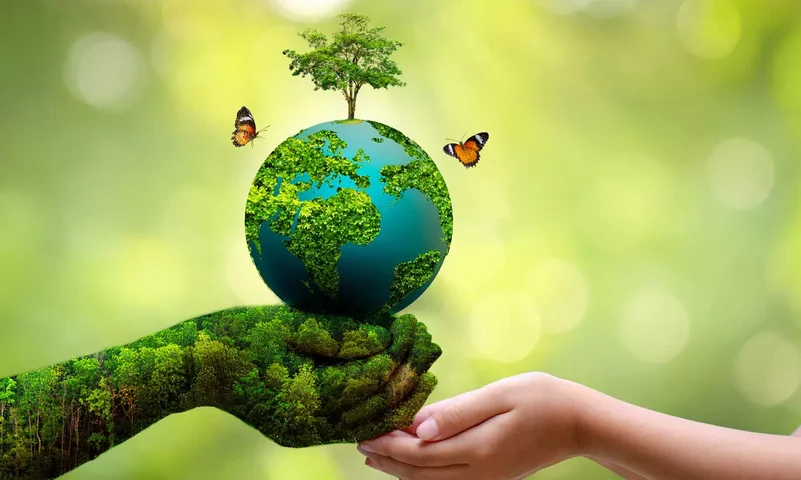Sikkim
Dominating both legend and landscape of Sikkim is the mighty Khangchendzonga. Known to outside world as Kanchenjunga, it is the third highest peak in the world. But to the Sikkemese it is much more than a mountain: Khangchendzonga is the Guardian deity, a country God whose benign watchfulness ensures peace and prosperity for the land. The five peaks of Khangchendzonga are the five Treasures of the Eternal Snow, a belief beautifully interpreted by the great Lama Lhatsun Chenpo: “The peak most conspicuously gilded by the rising sun is the treasury of gold, the peak that remains in cold grey shade is the storehouse for silver and other peaks are vaults for gems, grains and the holy books.” Each of the five peaks is believed to be crowned by an animal-the highest by a tiger and others by a lion, elephant, horse and the mythical bird Garuda. Along with the Guardian deity, the Nepal Peak, Tent Peak, Pyramid, Jonsang, Lhonak, Pahunri etc. and glaciers like Zemu, Changsang, Teesta, Changme are also important. The most important passes are Jelep-la, Nathu-la, Cho-la and Thanka-la in the east; Donkiua, Kongralamu and Naku in the north and Kanglanangma and Chia Bhanjyang in the west.
The divine status of the mountain, sanctified by legend, has been made enduring by the widespread worship of Khangchendzonga by all the people of Sikkim – Lepchas, Bhutias and Nepalese alike. The God is depicted as being red of colour, armed and mounted on a white snow lion; offerings are made to this majestic presence, ceremonies are held in his name and dances consecrated to him. Pang Lhabsol is one of the famous festivals of Sikkim which is a thanks giving celebration in honour of Sikkim’s presiding deity, Khangchendzonga. Dancers portray the guardian deity, its supreme commander Yabdu and the God Mahakala. It is a warrior dance and the dancers are chosen for their physical strength, quick reflexes and skill swordsmanship.
Now a word about the origin of the term Sikkim itself. The various ethnic groups have their own nomenclature. As far as the Lepcha and the Bhutia names are concerned, Waddle has it that, “the Lepchas call it Nelyang or ‘The place of caves’. Lepchas also call it Myel Lyang, which means “the land of hidden paradise or the delightful region or abode”. While the Bhutias call it Beyul Demazong or “the hidden valley of rice.” Another version says that Tensung Namgyal married three wives, a Tibetan, a Bhutanese and a Limbu girl. The Limbu girl, daughter of Limbu Chief Yo- Yo- Hang, brought seven maidens with her. These maidens were married into leading families of Sikkim. These Limbu maidens who had come to Sikkim for the marries called the place ‘Sukhim’ or “bride’s new house”, comfortable home. The Nepalis who came to Sikkim could not relate to Limbu pronouncement and thus corrupted the name to Sukkhim which underwent further distortion under the British.


THE SIKKIM STATE
Sikkim is a lovely region where people of all tribes and races coexist. In addition to its distinct dance styles, festivals, languages, cultures, and artisan forms, each of these various tribes and communities has its own distinct characteristics. Sikkim is home to a diverse range of ethnic groups, religions, and languages. Sikkim has a lot of interesting things to offer besides being a window to the Himalayas. Sikkim is known as a Tourist Place as well in India because of it “BEAUTY of NATURE”.
The Indian state of Sikkim is located in the country’s north-eastern region. With a surface area of 7300 square kilometres and a length of 114 kilometres north to south and 64 kilometres east to west, the elevation ranges from 300 metres to over 8540 metres above sea level. Sikkim is a landlocked Indian state situated in the Himalayas. The state is bordered on the north by the Tibetan Plateaus, on the west by the kingdom of Nepal, on the east by the kingdom of Bhutan, and on the south by the Darjeeling district of West Bengal.
This state in the northeast features a variety of snow-capped peaks, notably Kanchenjunga (8534 metres), the world’s third-highest mountain, which draws visitors from all over the world. With its great natural potential, tourism has become a new occupation for the Sikkimese people in this state. Cultural tourism, village tourism, ecotourism, homestays, wellness tourism, and adventure tourism have all helped to propel tourism in the state to new heights.SIKKIM’S CULTURE
Sikkim’s population is made up of three ethnic groups: Lepcha, Bhutia, and Nepali. These diverse cultures have resulted in a quintessential Sikkimese culture that embraces all aspects of life while maintaining its unique identity. Apart from Diwali and Dusshera, traditional Sikkimese festivities include Maghe Sankranti, Ubhauli/Udhauli, ChasokTangnam, Bhimsen Puja, and others. The most popular celebration, Saga Dawa, is celebrated with great zeal and excitement.
In Sikkim, noodle-based foods including thukpa, chow mein, thenthuk, fakthu, gyathuk, and wonton are popular. Every traveller should try momos, which are steamed dumplings filled with veggies, beef, or pork.SIKKIM’S ECONOMY
With a GDP of US$ 1.57 billion, it is India’s third smallest state. Between 2015-16 and 2018-19, Sikkim’s Gross State Domestic Product (GDSP) grew at a high Compound Annual Growth Rate (CAGR) of 11.72 per cent. The agriculture and allied services sector was given a budget allocation of Rs 484.52 crore (US$ 67.42 million) in the 2018-2019 budget. The secondary sectors are the most important contributors to the state’s economy. In recent years, the state has seen an increase in food processing, cosmetics, pharmaceuticals, and breweries, and has become an industrial hub for these items.
SIKKIM’S DISTRICT
East Sikkim, North Sikkim, South Sikkim, and West Sikkim are the four districts of Sikkim. Gangtok, Mangan, Namchi, and Gyalshing are the district capitals, respectively. These four districts are further subdivided into 16 subdivisions, with the East district’s subdivisions being Pakyong, Rongli, Rangpo, and Gangtok. The West district is divided into four subdivisions: Soreng, Yuksom, Gyalshing, and Dentam. The North district is divided into four subdivisions: Chungthang, Dzongu, Kabi, and Mangan. The subdivisions of the South district include Ravongla, Jorethang, Namchi, and Yangyang.
